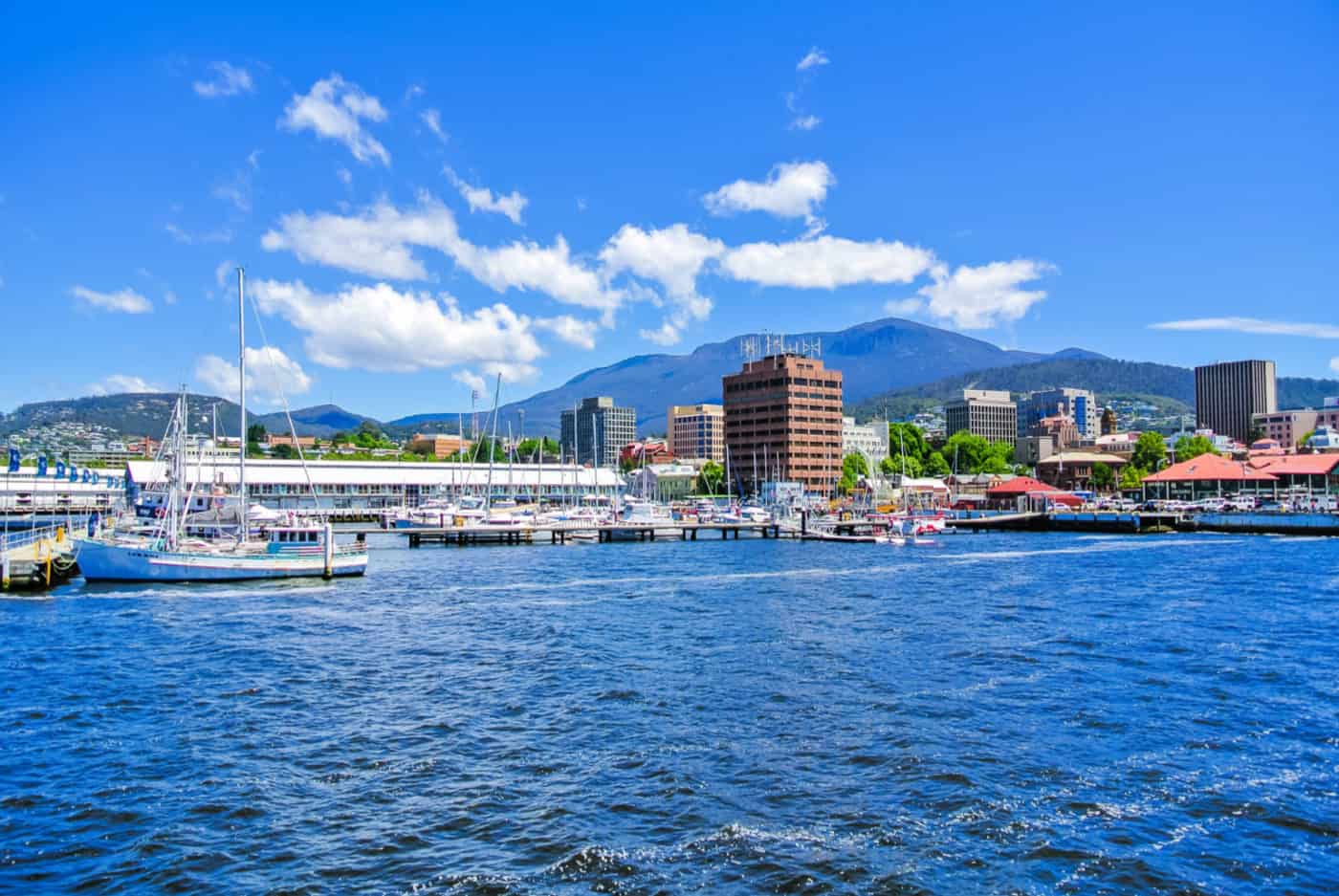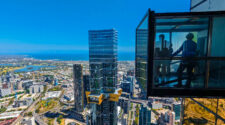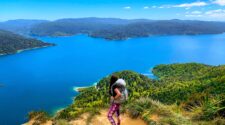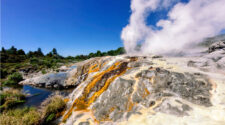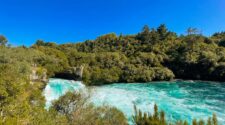Hobart is a microcosm of Tasmania. Although it’s a relatively large city in a state that’s mostly wilderness, Hobart’s charming and understated nature is exactly what comes to mind when thinking about the Apple Isle.
Located in the southeast region of the Tasmania, Hobart has an incredible mix of history for you to enjoy. One that rivals the tales pouring out of Sydney and Melbourne. Its several UNESCO sites showcase the city’s convict past and its well-preserved architecture allows you to experience 19th century sights while enjoying Hobart’s refreshing and modern culinary scene.
The compact nature of Hobart means that it’s easy to get around. Neighborhoods flow into one another and you can easily walk between many of the top attractions. With the addition of the Derwent River and surrounding mountains, Hobart is also a great launchpad for many outdoor adventures.
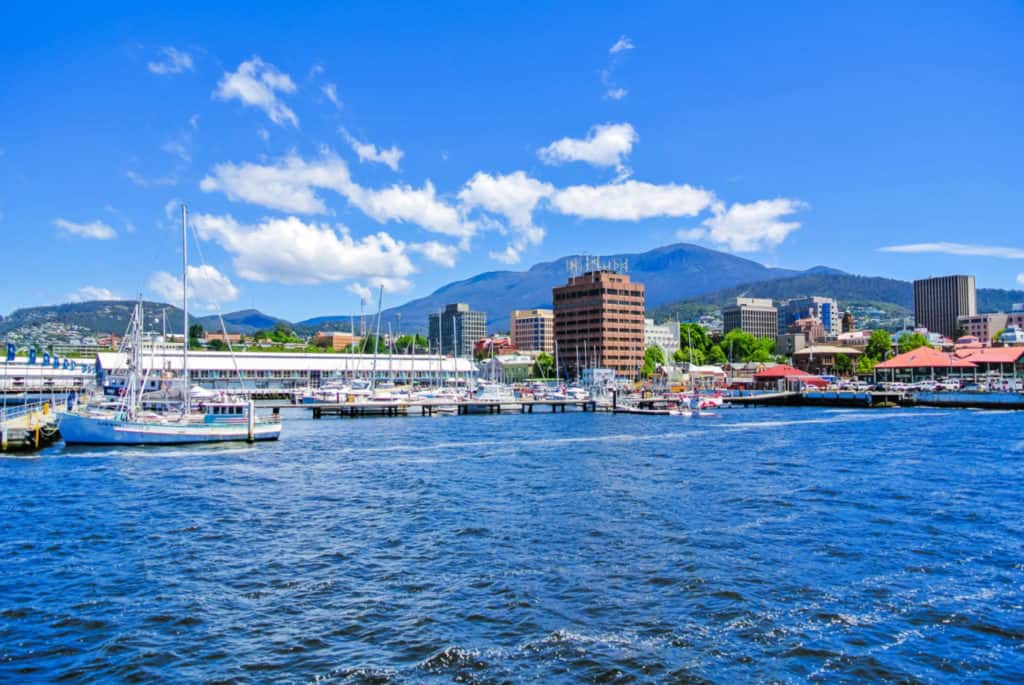
Explore the Salamanca Waterfront
Hobart is a tightly packed city, where neighborhoods blend effortlessly into one another. Its waterfront area could be seen as one part of town, yet there are several distinct sections, with one of those being the famed Salamanca Waterfront (or Salamanca Place). We dive into the neighborhood’s beloved market below, but this waterfront area has layers of interesting history, an aura of creativity and rich culture.
Because of this, exploring the Salamanca Waterfront is one of the best first things to do in Hobart. Wander along to the harbor’s southern end where you’ll find street blocks teeming with art galleries, chic cafes and boutique shops slinging handcrafted jewelry and vintage ware. It’s all done within historic buildings, once home to the city’s first residents, from salt-washed sailors to prominent merchants.
As you explore the neighborhood, you’ll be taken in by the lively atmosphere, along with its fantastic and fresh food scene. Along the way, you can check out the Peacock Theatre for live productions and free Jazz music in its beautiful courtyard. Before visiting the Spacebar Gallery for local arts and crafts.
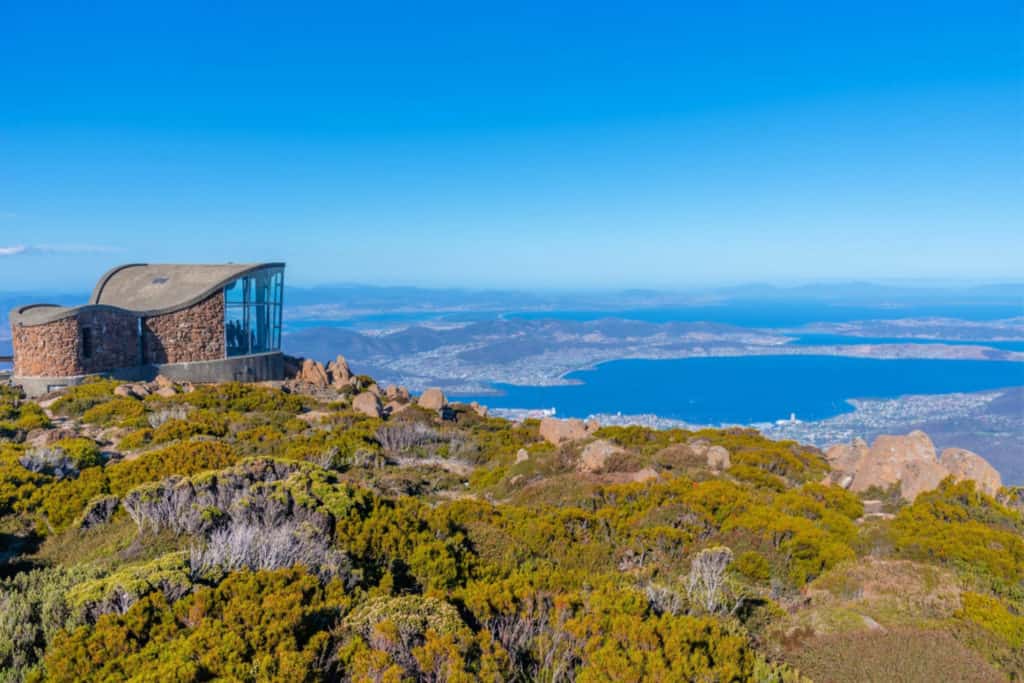
Hike to the top of Kunanyi/Mount Wellington
The natural beauty of Tasmania is slowly becoming front page news after decades of being underrated. Travelers will no doubt have planned plenty of adventurers around the state, but in Hobart, there’s a fantastic hike right on your doorstep. In the colder months, the mountain, which stands at 4,170 feet (1,271m) receives a regular dusting of snow. Come spring and summer, it features one of the best treks in town.
Kunanyi soars over Hobart like a watchful mother, blocking the true ruggedness of Tasmania’s wilderness that lies further beyond. Travelers short on time can drive the 13 miles (21km) to the summit along winding mountain roads that take you from dense forests up to spectacular subalpine landscapes.
However, to explore the beautiful environment at a slower pace, you can hike to the top via a variety of trails. A popular hiking trail begins at The Springs and will take between 1.5 and 2 hours to reach the summit at a leisurely pace. The entire loop is 5.4 miles (8.7km).
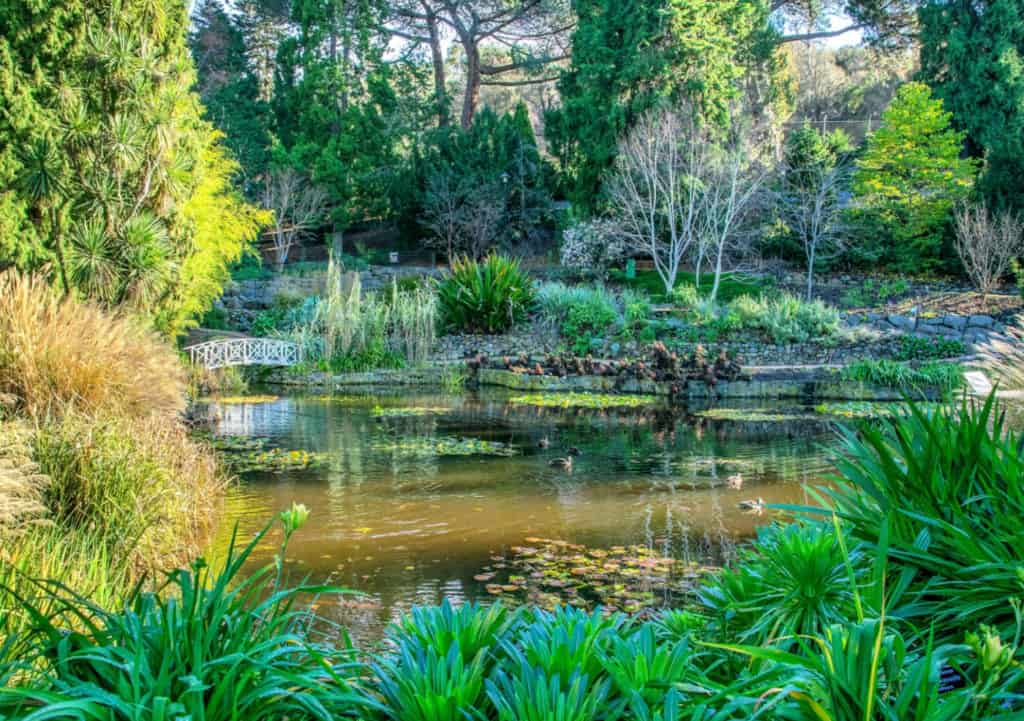
Visit the Royal Tasmanian Botanical Garden
On the banks of the River Derwent, in Queens Domain, the Royal Tasmanian Botanical Garden is one of the oldest in the nation. Visitors will be able to explore a stunning landscape harboring flora that was planted over two centuries ago. Considering the age of Hobart, this is an impressive feat.
The gardens roll over the riverside hills where the cool-climate gardens provide you with vibrant and prismatic colors. There are several sections writing the botanical gardens, including the Japanese Garden, Subantarctic Plant House and the Tasmanian Fernery. Each help to showcase the incredible diversity of flora. The Subantarctic Plant House is the first of its kind on earth and is able to replicate the environment of the region producing plants that few would ever get to see. Just be sure to wear something warm, so you can stick around.
The Royal Tasmanian Botanical Garden open at 8am daily with on-site restaurants and cafes. There are also plenty of open lawns for picnics with your traveling crew, family, or partner.
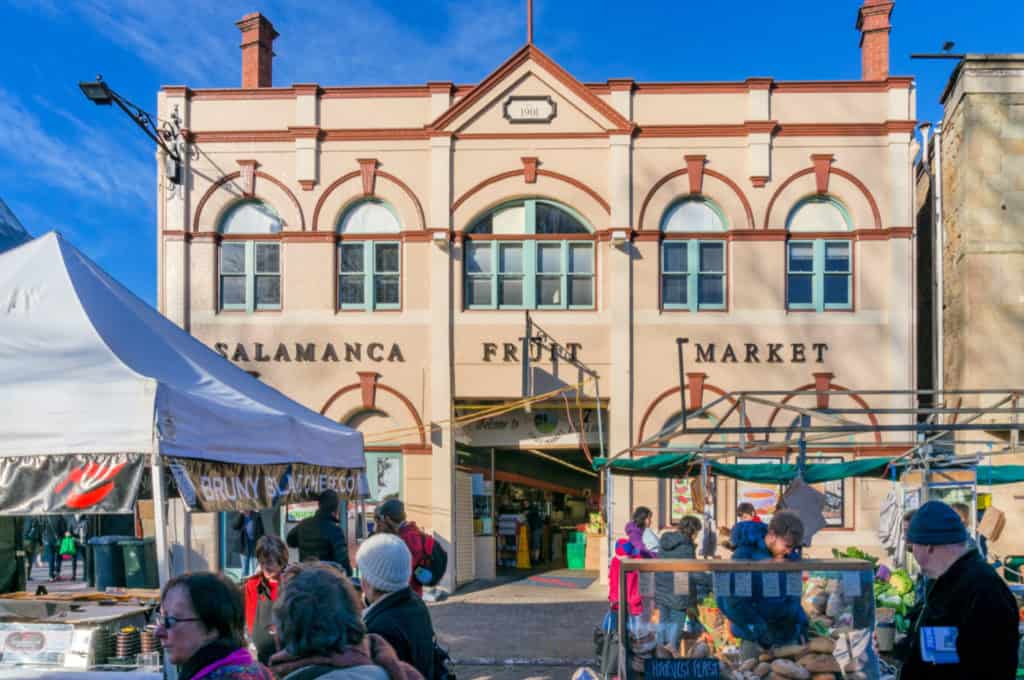
Experience the Salamanca Market
There’s never a bad time to explore the Salamanca Waterfront, but you must return on Saturday to experience its famous market. Each Saturday morning, Hobart plays host to the Salamanca Market, which has grown to be one of the biggest in Australia since beginning in the 1970s.
Today, you’ll find over 300 vendors selling a wide range of products in a vibrant atmosphere with live music floating through the air. The market’s immense popularity doesn’t mean the vendors are resting on their laurels either. Locals and travelers are blessed with a quality selection of antiques, craftwork, clothing and fresh flowers.
The market begins at 8.30am with the excited crowds pouring in from the opening minute. The festive atmosphere continues to grow as you wander up and down the eclectic aisles. Along the way, take plenty of time to enjoy the scene and the aromas of delicious local treats before kicking back on the open lawns listening to the buskers.
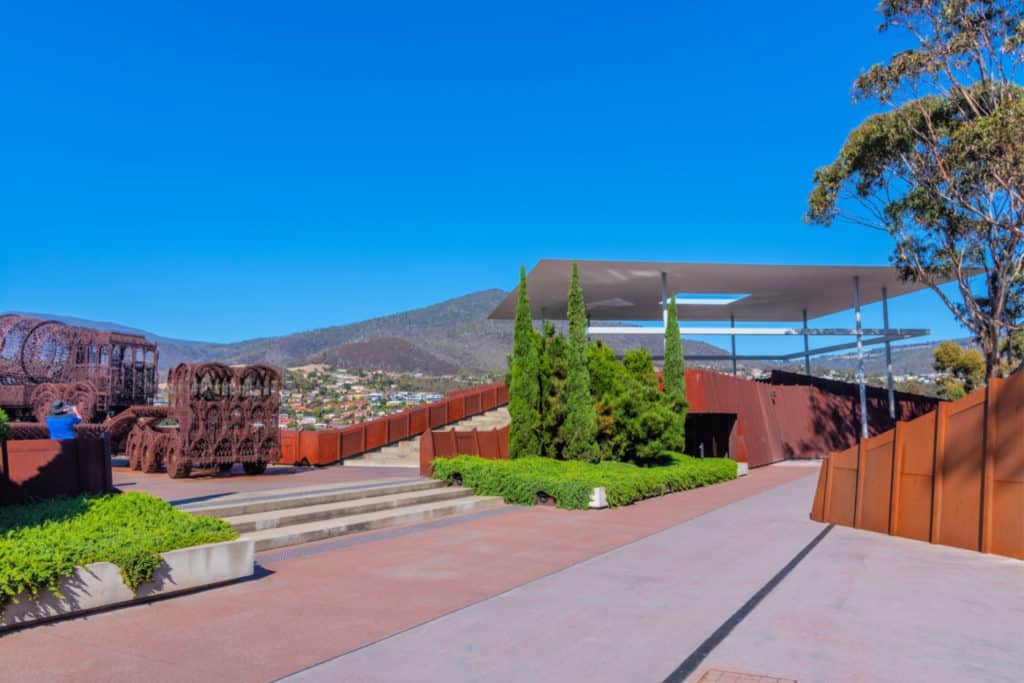
Wander through MONA
Twenty minutes out of Hobart, MONA (the Museum of Old and New Art) courts the unconventional, in a way few galleries would dare. The art museum has brought Hobart both the MONA FOMA and DARK MOFO festivals, which captivate attendees every year. But on a daily basis, MONA visitors can experience the weird and wacky.
It’s an art gallery that has a unique disposition, a want to do its own thing and that’s why ones of the best things to see in Hobart. Forget your tried-and-true gallery and expect the unexpected. This can include ample use of light and sound with its experiential art section along with exhibitions design purely for the young ones.
It’s a provocative collection of art that will get you thinking. Some of the most interesting displays include an Egyptian sarcophagus and a machine that transforms everyday food into a brown goo. Visitors will also have access to portable touch screens that allow you to interact with each piece.
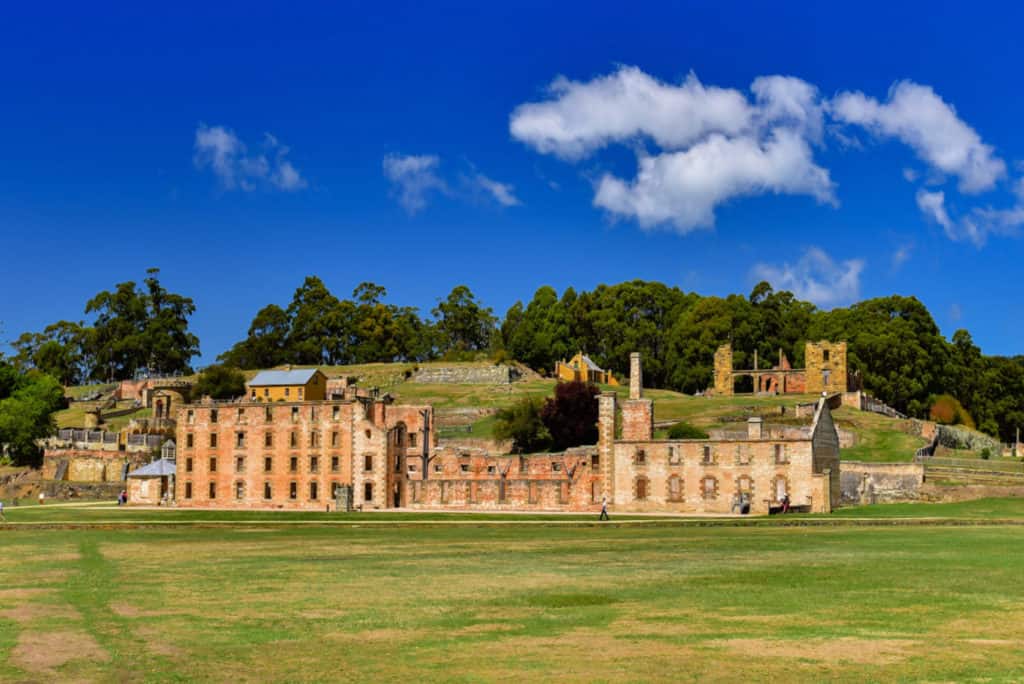
Take a Trip to Port Arthur
The history of Port Arthur is one that sticks in the minds of many Australians. It’s a place students learn about early on at school, and its significant past continues to make it one of the top attractions in Hobart. Those interested in Australian history should have the site high on their list of things to do.
Port Arthur is a former convict colony around a 90-minute drive out of Hobart on the Tasman Peninsula. The eerie experience starts early as the town first appears through the coastal forests. The UNESCO World Heritage Site is the best example of a convict colony in the country with over 30 well-preserved buildings helping to tell a story centuries in the making.
In 1830, Port Arthur was first developed and some of the state’s notorious convicts were sent here and had to work in grueling conditions. As you wander around the site, the lush lawns contrast to the historic yet scarred buildings such as the old guard tower, hospital, church and prison.
On this guided tour, you can explore both the site and the dramatic Tasman National Park in a single day.
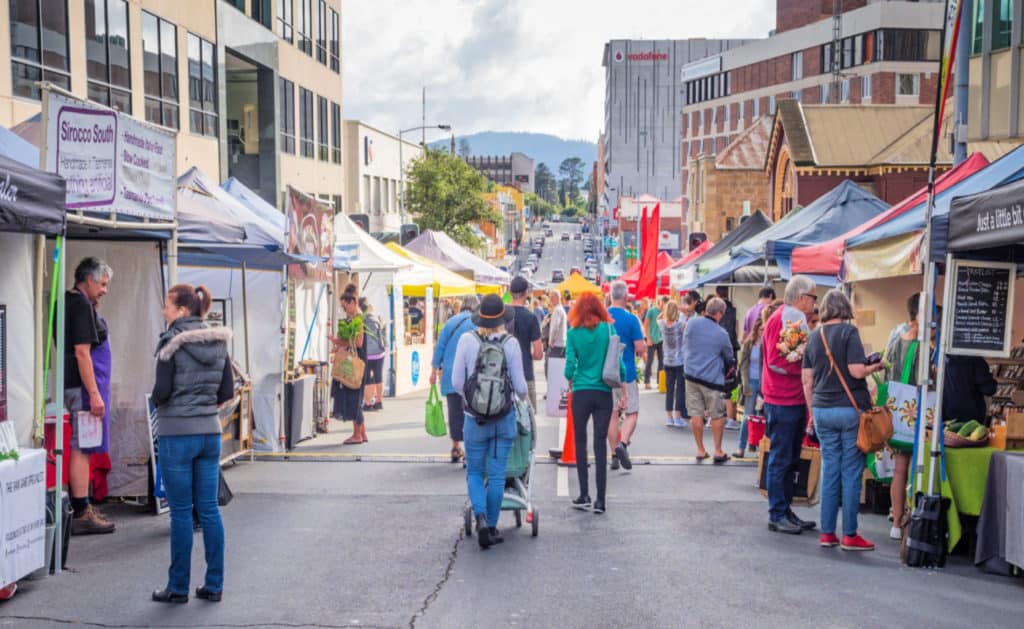
Spend Sunday Morning at Farm Gate Market
Lost in the haze of Salamanca Market, the Farm Gate Market is another local favorite. Operating on Sunday, it provides you with the perfect one-two punch, creating a great weekend of local produce and joyful atmosphere. The market is also on Bathurst Street in the center of Hobart, likely placing it within walking distance of your accommodation.
Farm Gate started as a small, modest market with just a dozen vendors over a decade ago. The market focuses on fresh local produce with the idea that if you can drink it or eat it, then you’ll find it right here. Travelers planning a picnic will have a field day as they wander down the aisles of ever changing fresh food, artisan creations and beverages. Its hearty use of seasonal produce has helped to make it one of the top farmers markets in Australia.
At 8.30 a farm bell rings and the market opens. You’ll be joined by a strong local crowd who use the market for their weekly shop, along with live music and face painters for the kids.
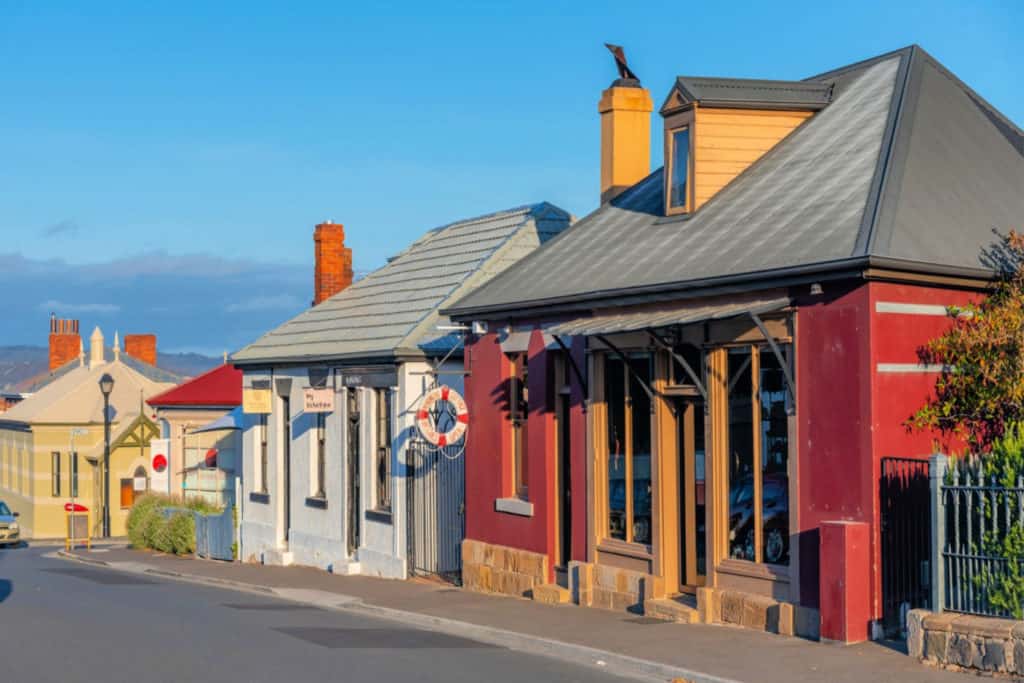
See Battery Point
Further along the waterfront from Salamanca is Battery Point. It’s here that you’ll find the strongest concentration of historic architecture, with the many buildings providing a lovely glimpse into the past.
As you walk towards Battery Point, you’ll first have to walk up Kelly’s Steps, which remain from the colonial era. The steps were implemented to connect the rest of Hobart to the point that juts out into the River Derwent. From there you can get lost in the labyrinth of charming laneways and narrow streets, in a part of town that stands untouched from the early 20th century.
As you explore, you’ll discover rows of quaint cottages that once held military personnel who were stationed at the outpost in Battery Point. The old sandstone buildings are now home to a vibrant cafe scene where Hobart’s modern vision meets its storied past.
To further explore the area, link up with the Battery Point Sculpture Trail. The 1.2 mile (2km) trail takes you through the seaside neighborhood to nine sculptures that unveil the many fascinating tales of Battery Point alongside the neighborhood’s top architectural gems.
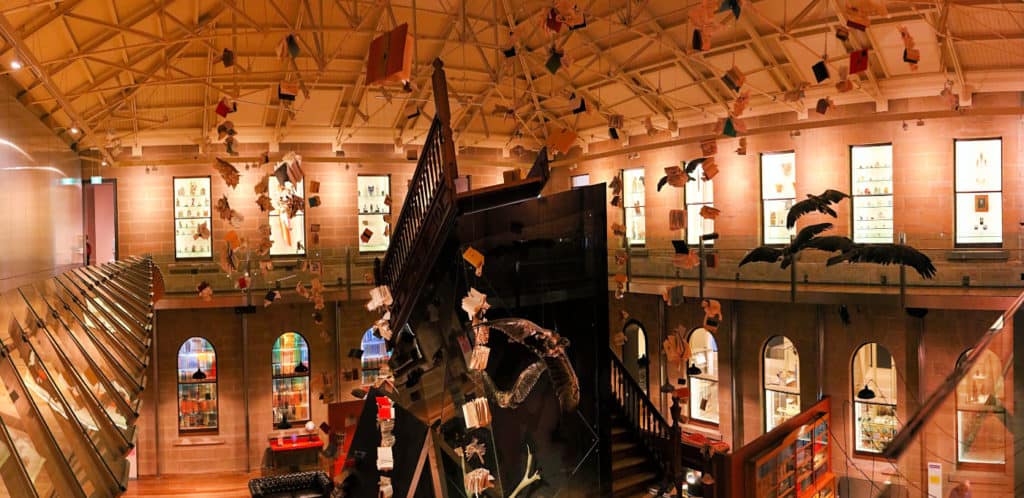
See Art and History at TMAG
The Tasmanian Museum of Art Gallery, aka TMAG, is the second oldest museum in the country. On the waterfront, the museum is housed within Hobart’s most historic public building, the 1808 Commissariat Provision. It complements the edgy MONA with a more traditional look at art, along with plenty of interesting history.
Free for all visitors, TMAG is as insightful as it is family friendly. Guests can explore on their own volition or sign up for a free guided tour that will provide an expert’s insight into the many displays. The Tasmanian Museum of Art Gallery explores the history of the local Aboriginal communities, its convict past, contemporary art and the state’s nature.
Like many of the best things to do in Hobart, TMAG is child friendly. There is a range of hands-on programs that will give kids the opportunity to experience the museum in an interactive fashion.
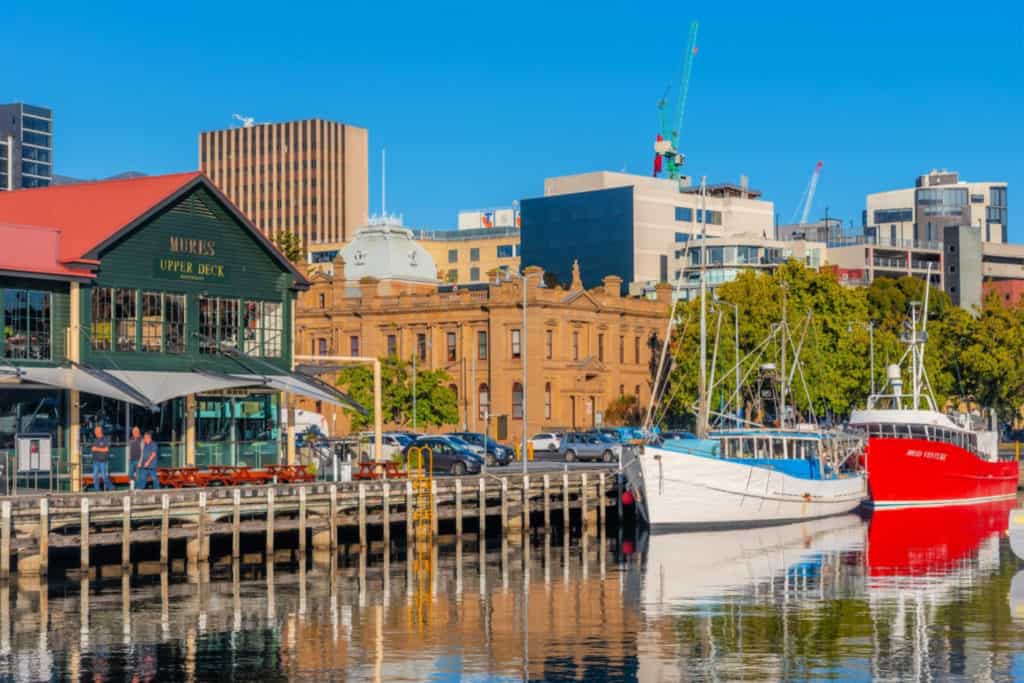
Stroll along the Waterfront
The Hobart Waterfront is a great place to explore during the day, especially on the weekends, when everyone is walking about and (hopefully) enjoying the sunshine. But its charming waterfront district is even more beautiful at night. The lights line the series of piers and docks, glistening against the harbor, and the quiet city has an aura of tranquil peace. A great example of this is the TMAG building, whose sandstone facade reflects off the water.
Starting at its northern end, wander along Constitution Dock and the Elizabeth Street Pier. Between the two are a series of casual and fine dining restaurants that make for a great date night by the water. Hobart’s salivating seafood scene is on full display here, with the Landscape restaurant offering high end dishes and Mures Lower Deck serving up mouthwatering chowder on a budget.
But if the evening isn’t too cold, rug up with your partner and get your hands on some fish and chips to go. With your dinner in hand and wrapped in paper, find a beautiful spot by the star-lit river and enjoy the views. Just don’t forget the chicken salt.
Dine at Franko
Beginning in the late spring and lasting all the way to the early fall, Street Eats @ Franko is the place to be on Friday nights. From 4pm, the community converges in Franklin Park, which is just a few blocks from the waterfront. Joining them is a selection of mouth watering street food vendors serving up Hobart-inspired cuisine, along with international favorites.
As the sun falls on Hobart, young and old come together and relax on the grass, enjoying their chosen eats. The dishes snack size allows you not to fill up on one thing, leaving the opportunity to try all that your heart desires, from curries to farm-to-park burgers.
Alongside the mini-kitchens are local breweries and distilleries, keeping you refreshed. Have your choice of locally produced liquors and spirits along with zesty craft beers. With the food and drink sorted, all you have to do is kick back and enjoy the varied live music as the sunset paints the sky above.
When it comes to gourmet dining, Tasmania has no shortage of options. To experience some of the best, enjoy this Bruny Island food tour, departing from Hobart.
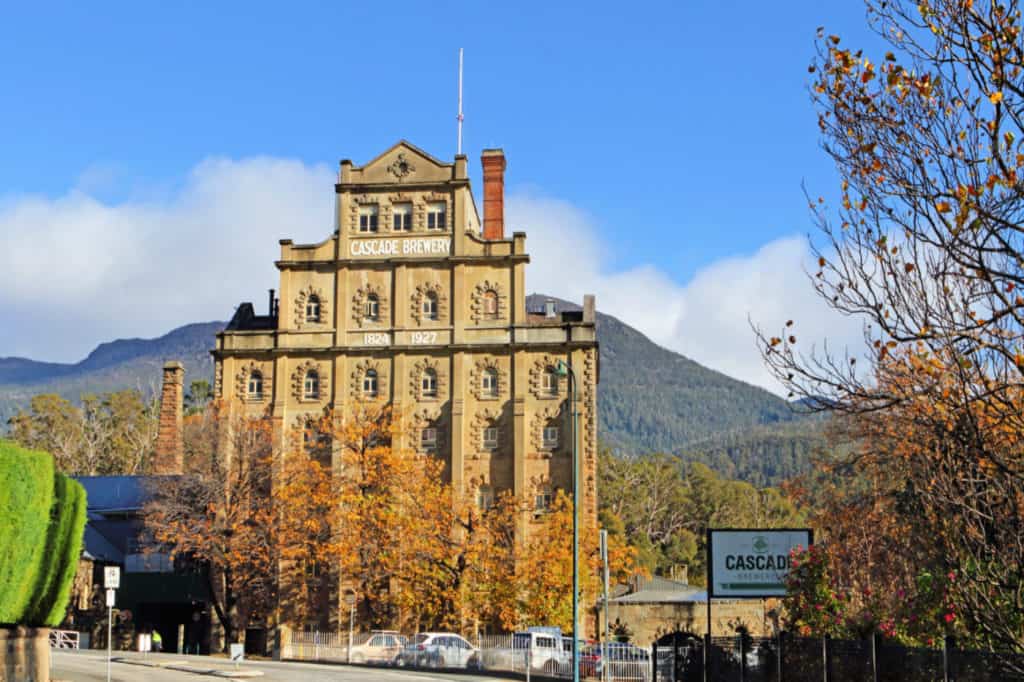
Tour the Cascade Brewery
For all who enjoy an ice cold pint, Cascade Brewery is one of the defining highlights of Hobart. The company first began back in 1824, and within the historic Gothic building is the oldest operating brewery in the nation. To arrive, travelers will need to complete just a brief drive out of downtown, or jump on the Metro Bus that departs from Franklin Square.
The best time to visit the brewery is during the week. This is when their renowned walking tours occur, which takes you behind the scenes on a discovery of this historic facility. To ensure you get a spot on one of the tours, make sure to book ahead of time. Along the way you’ll learn about Cascade Pale Ale, which dates back to 1832 and is still found in fridges across Australia.
Along with exploring the history and process of the brewery, true beer aficionados can complete a 60-minute Beer School lesson that will have you ready to make your own backyard brews. Afterwards, head into the lush grounds outside the brewery and enjoy a tasting paddle, with four of your favorite beers or ciders.
Check out the Hobart Convict Penitentiary
The work of Irish architect James Lee Archer can be seen all over Hobart, from the Anglican Church to the Theatre Royal. Another example is the Hobart Convict Penitentiary. The architect was a busy man as he shaped the city at the beginning of the 19th century.
The Hobart Convict Penitentiary offers excellent insight into Hobart’s convict past. Curious travelers and history buffs will enjoy the preservation of the penitentiary, which showcases the sight as it was throughout the 1800s. It’s a significant international convict site and was a home for up to 40,000 convicts during its time before becoming the Hobart Gaol.
The only way to experience the penitentiary is on a guided tour, and honestly, you wouldn’t want it any other way. These tours run between Tuesday and Sunday and will take you through the intricate site that features underground tunnels, gallows and rows of cells, plus an eerie chapel.
If you aren’t interested in the historic side to the building, then maybe a ghost tour of the Hobart Convict Penitentiary will pique your interest?
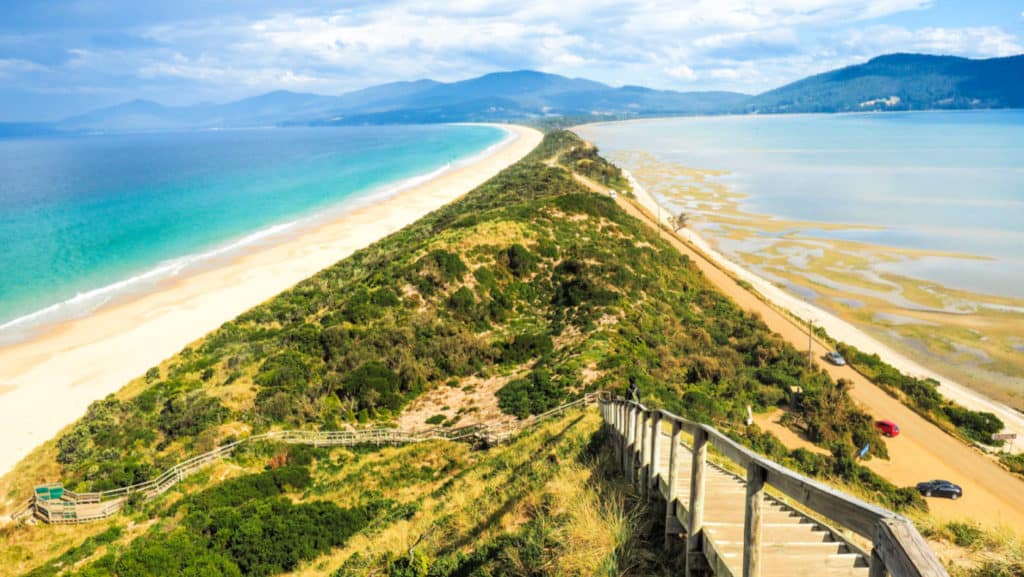
Head to Bruny Island
One of the best things to do in Hobart is to embark on a day trip to Bruny Island. The island is a narrow speck of land off the southern coast of Tasmania. Its rugged and unpredictable landscapes feature towering cliffs that rise from the unforgiving ocean. Bruny Island is a poignant reminder that while Hobart is adorable and charming, much of its surrounding regions are wild and utterly beautiful.
To reach the island, you’ll need to drive 35 minutes south of Hobart to Kettering. From there, you can embark on a 20-minute ferry ride. Once you’ve set foot on the island, it won’t take long to admire Bruny’s array of exceptional plant life along with the chance to spot some of Australia’s endangered native wildlife.
One of the highlights is South Bruny National Park. This is the place to go for cliffs shrouded in shrubbery with the presence of penguins and seals below. Come and complete a hike or explore the water on an eco-cruise.
For the best views of Bruny Island, make your way to the Neck. This is a narrow slit of land that connects the north and south regions with a startling viewpoint.
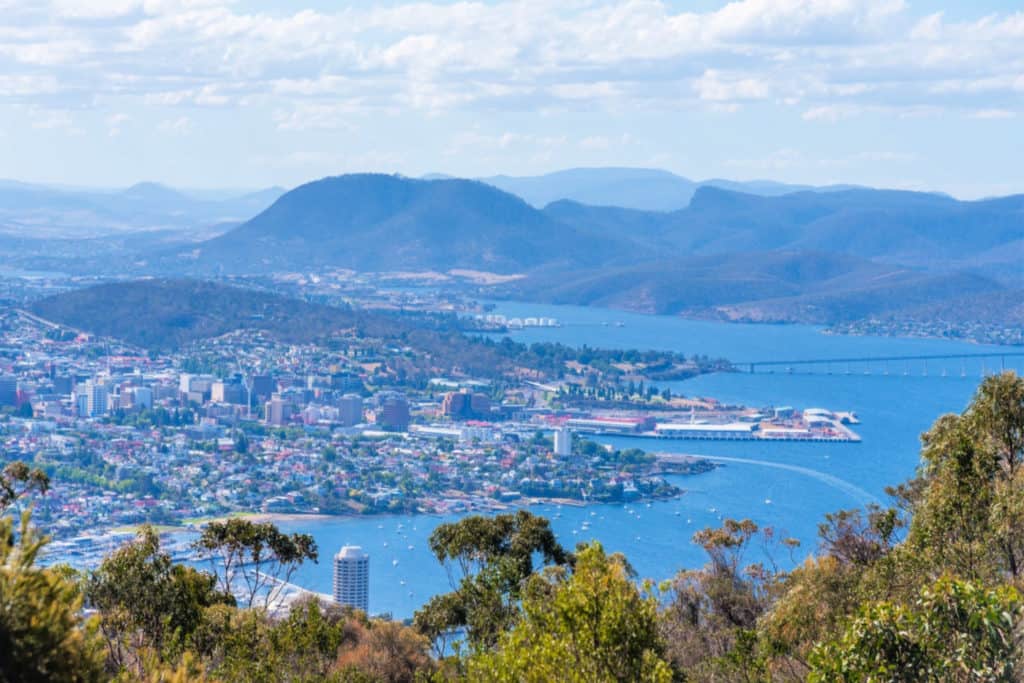
Summit Mount Nelson
If Kenanyi wasn’t enough, then a trek up Mount Nelson will round out your local hiking experience in Hobart. Atop Mount Nelson is the Signal Station which was built in 1811. The station was then able to relay messages between the city and the convict colony in Port Arthur. But today, this is a beloved spot for panoramic views and for picnics with a cafe slinging breakfast and lunch.
From the trailhead in Lambert Park, you can hike a 3.1-mile (5km) trail up to the Mountain Nelson Signal Station. The first section ventures into Bicentennial Park before growing steeper as you make your way up the ridgeline. It will take over an hour to reach the summit views, with nature providing some refreshing spurts of shade along the way.
After reaching the top, reward yourself with a drink at the cafe while taking in the rivers of the Derwent River, downtown Hobart, and all the way to the far horizon. From the top, you’ll also have access to a trail that snakes through the gorgeous Truganini Reserve.
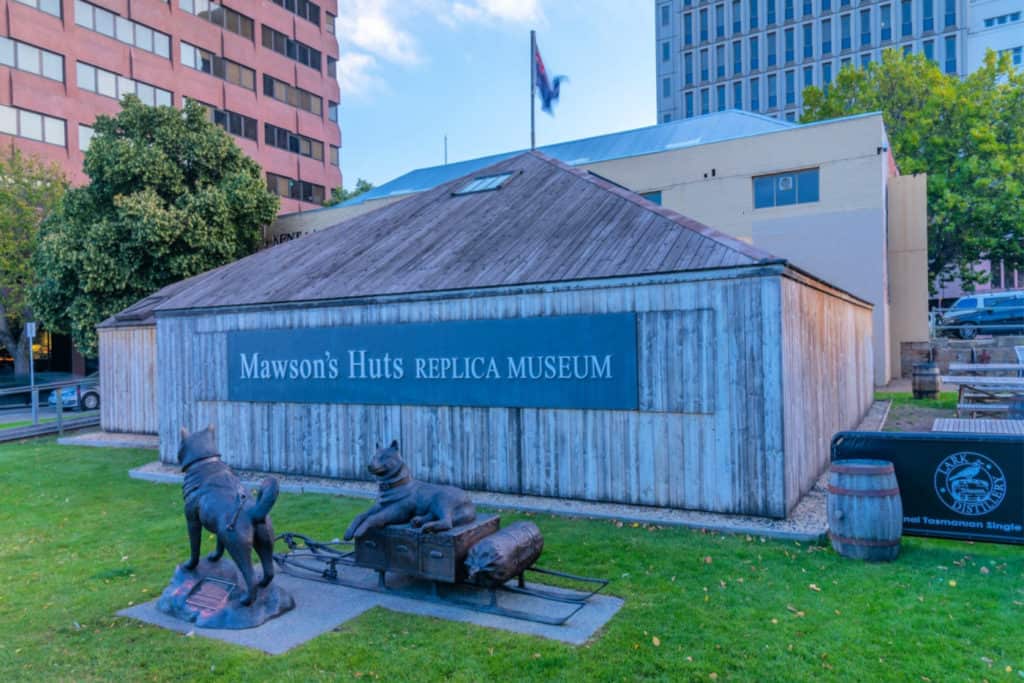
Explore Mawson’s Huts Replica Museum
Have you ever wanted to experience life in Antarctica? Well, you can at the Mawson’s Huts Replica Museum. It’s one of the most interesting experiences in Hobart and provides a living, breathing museum for you to enjoy.
The museum is located on the other side of Constitution Dock, along the waterfront. It features a series of replica huts that were used on Douglas Mawson’s Antarctic expedition that lasted from 1911 to 1914. An expedition that began right here in Hobart.
The attention to detail is quickly obvious. The huts have been expertly replicated along with the torrid conditions found in the southern continent. As you step into the huts, you’ll hear the howling of the winds and begin to understand what those three years must have been like.
Alongside the huts, the museum boasts relics from the real expedition and insight into the many tools that were used at the time. You can also discover detailed information about all the expedition’s explorers plus awe-inspiring footage.
Enjoy a Sightseeing Tour
With so many things to do in Hobart, you may struggle to fit it all in your itinerary, especially if you have plans to explore the rest of the Apple Isle. If this sounds like you, then you can see many of the top local highlights in a single and exciting three-hour tram tour.
This old-school street car turned bus will take you to over 40 of the city’s top sights. Many of those are on this list, including the Salamanca Waterfront, the Penitentiary and the Botanical Garden.
Departing from the Brooke Street Pier, you’ll learn about the founding years of Hobart at Sullivan’s Cove before scooting by Parliament House on your way to Battery Point, St. George’s Church and the gorgeous town of Sandy Bay.
But the fun doesn’t end there. Afterwards, drive across Derwent River over the Tasman Bridge to Rosny Hill for all-encompassing views before ending at the Royal Tasmanian Botanical Garden.
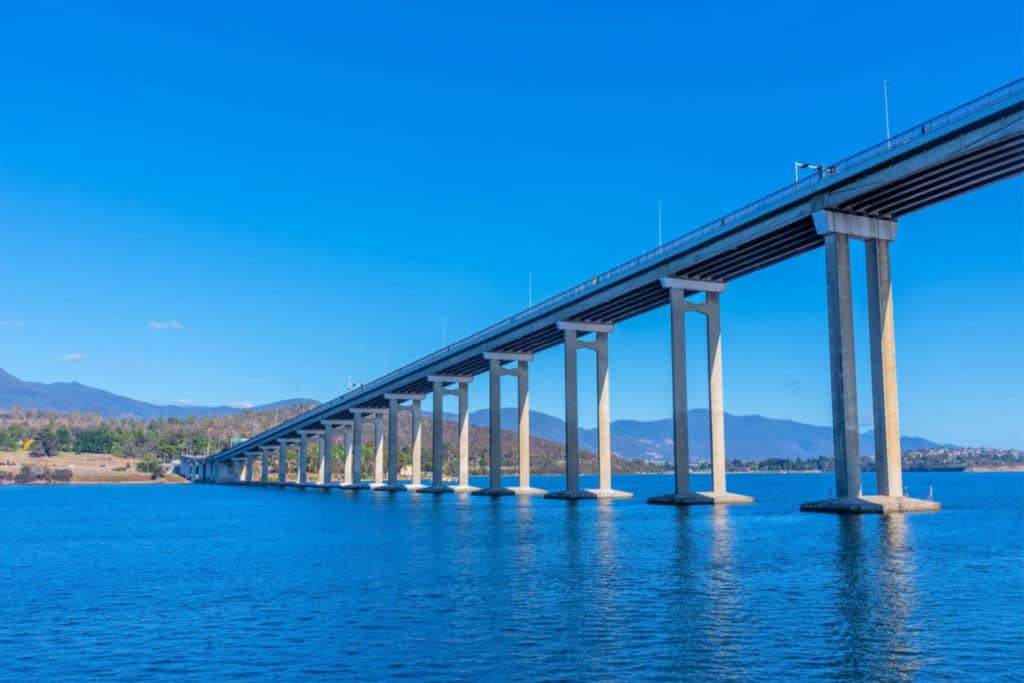
Cruise the River Derwent
Starting from Lake St. Clair, the Derwent River flows more than 124 miles (200km) through some of the best scenery in the state. It eventually cuts through Hobart, meandering all the way into the Tasman Sea. The water-drenched and sun-soaked banks of the river were common grounds for Aboriginal mobs for thousands of years before the European arrival and the beginning of Tasmania’s convict history. The river then became a great source for local farmers, along with the fishing industry and transport between Hobart and regions to the north.
With Hobart Historic Cruises, you’ll have plenty of options for exploring the river. These include trips north towards the Tasman Bridge and Montagu Bay or to the south past Battery Point. There are also lunch and dinner cruises, with the latter featuring a three course meal.
If a kayak tour sounds more your speed, then here’s a way to get out on the Derwent River. Paddle alongside towering ships on your way to the beautiful waterfront. Plus, fish and chips as you float on the river.
Taste Whiskey at Lark Distillery
Although not a party city, there’s no shortage of places to enjoy craft booze in Hobart. If you love your whiskey, then Lark Distillery is worth a visit. The distillery opened in 1839, becoming the first (legal) distillery in the state. But upon closing, it wasn’t seen for decades until a surprising revitalization in 1992.
Since reopening, it has started a line of award-winning single malt whiskey that will melt your heart. Tours of the distillery, which is found behind Constitution Dock, run from 10.30am to 1pm from Friday to Sunday. The tours peel back the curtain on the renowned distillery, unveiling the process from start to finish.
But you don’t have to go to the distillery proper to enjoy Lark’s single malt whiskey. The distillery operates two bars in the downtown district, Whisky Bar and the Lake Cellar Door. This is a great place to enjoy a tasting, or even a whiskey flight, before buying a bottle to keep handy as you travel around Tasmania.
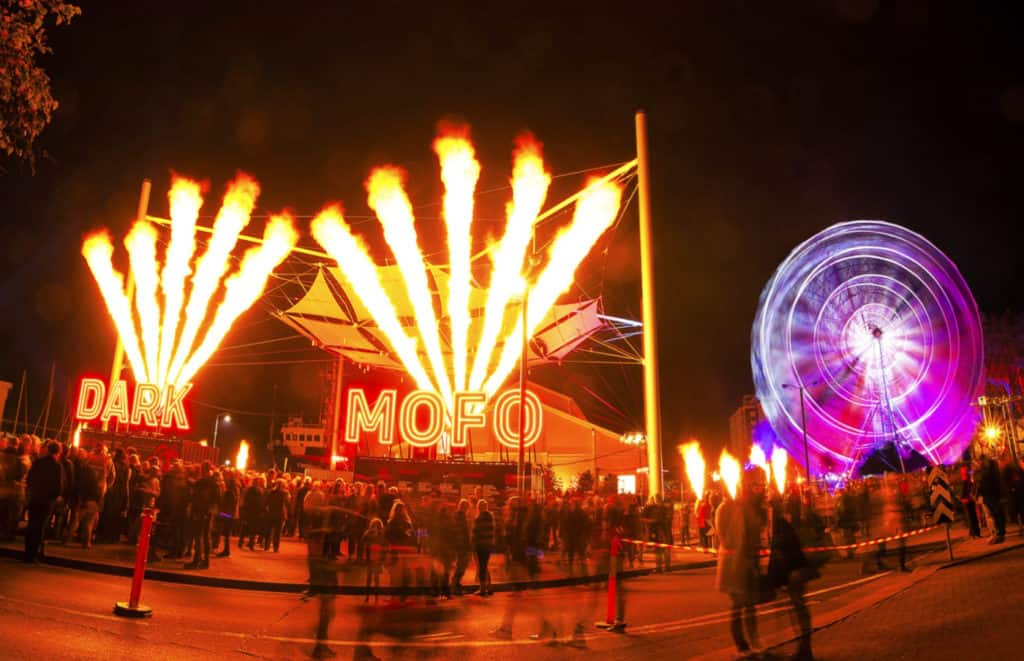
Experience Dark MOFO
Run by the Museum of Old and New Art, Dark MOFO is one of the top arts festivals in Australia. A newcomer to the scene, Dark MOFO only got its start in 2013. That year, the festival featured Spectra, a 9.3 mile (15km) light installation that has gone onto be a permanent part of the museum. The traditional nude solstice swim also started that year. This sees over 1,000 attendees dive naked into the Derwent River. It’s even more impressive once you realize the event is held in the dead of winter.
Dark MOFO occurs annually in June. Travelers can expect a vibrant festival laden with quirky productions, old school films and a fair share of entrancing light shows. Not to mention fun, late night experiences at MONA.
If you’ve seen MONA before, expect the museum’s offbeat nature to go up a notch during the festival which celebrates a number of old time pagan traditions and dark practices. This is shown through the many music and dance shows that showcase light, darkness and 21st century mythology.
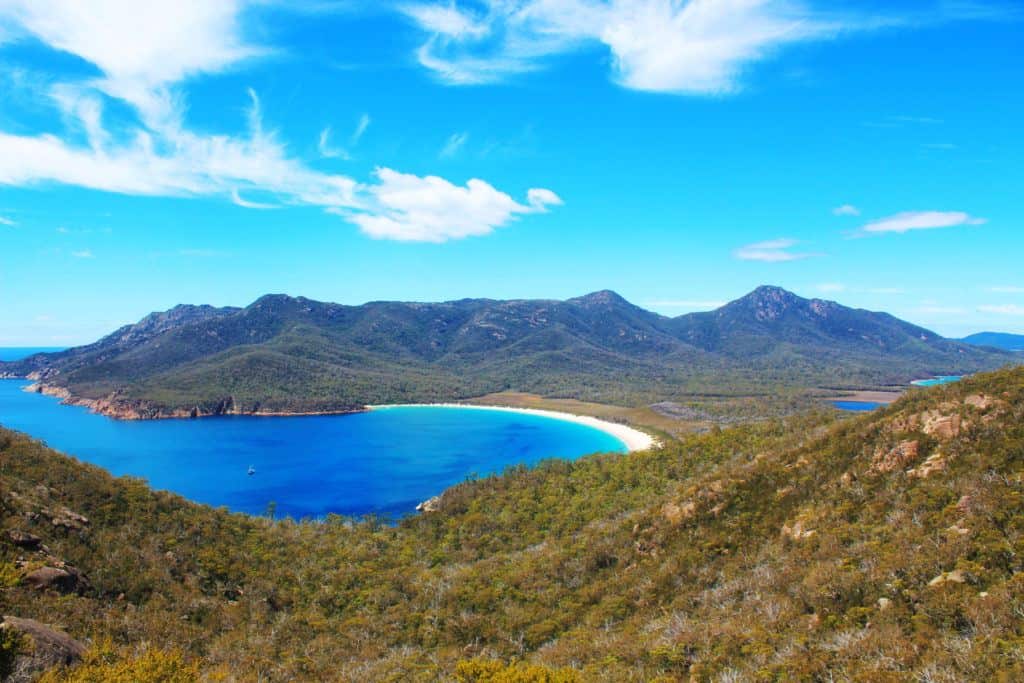
Day Trip to Wineglass Bay
If you don’t have time on your travels to see the rest of Tasmania, then spare some time for just one major trip out of the city. Wineglass Bay is one of the top sights in the state and is only a 2.5 hour drive away and a scenic one at that.
The image of Wineglass Bay is one shown across a great number of advertisements not just in Tasmania but all of Australia. The bay is lined with soft snow white sand that connects two granite peaks within the beloved Freycinet National Park.
For an unforgettable view, hike to the Wineglass Bay Lookout. From there you’ll see the mountains split by a dual-sided bay, forming the perfect wine glass filled with turquoise water and the reflection of the gleaming sun.
If you don’t have a car, join this full-day tour to see it all, plus the historic town of Richmond.

